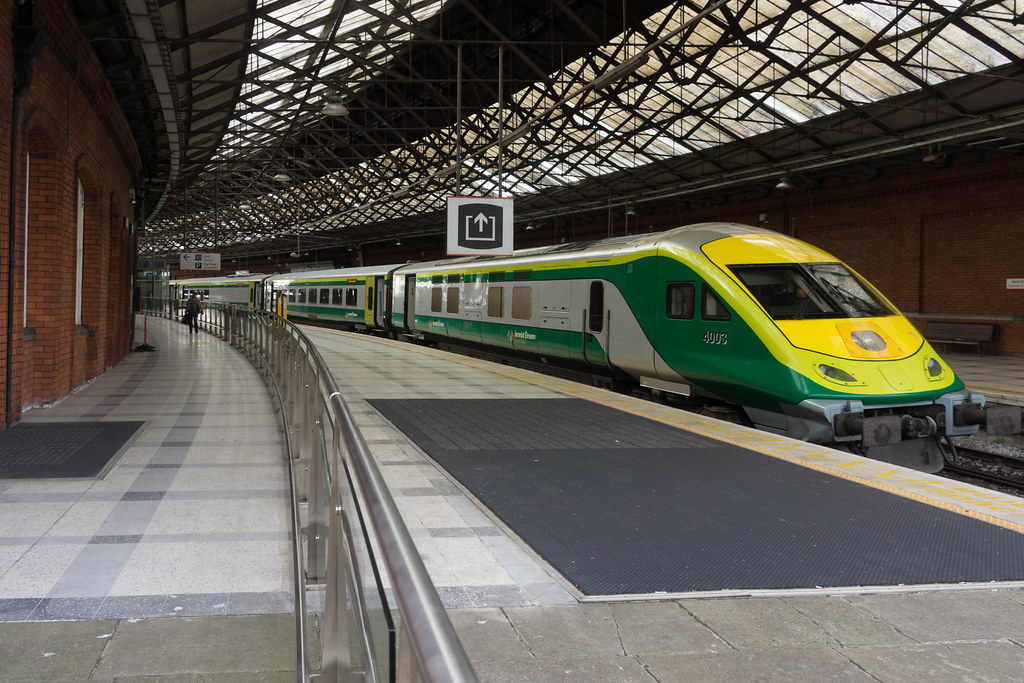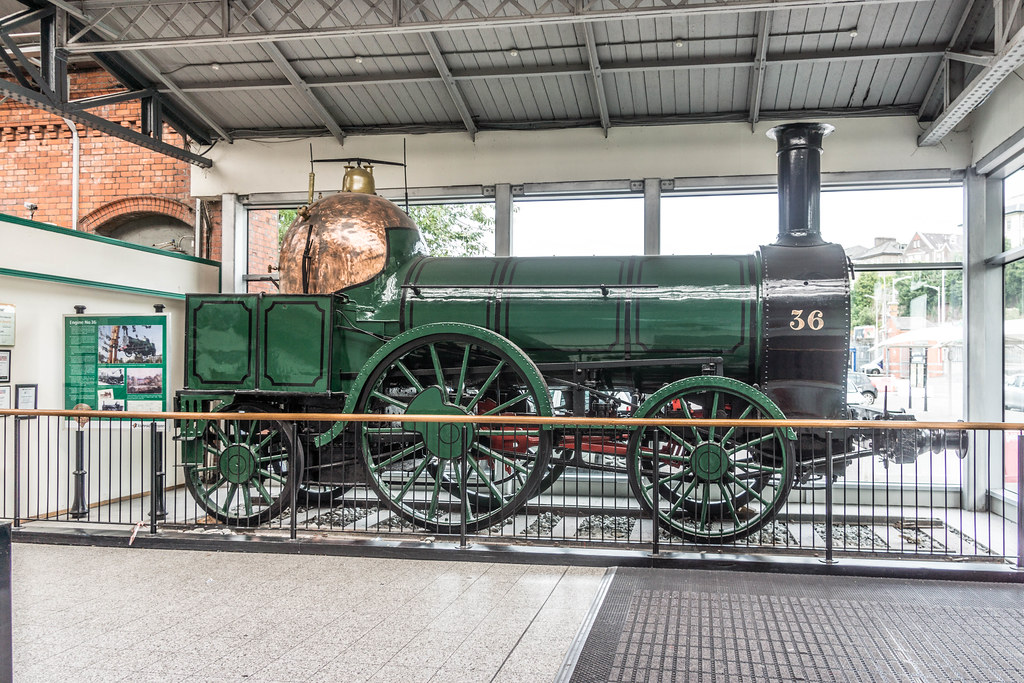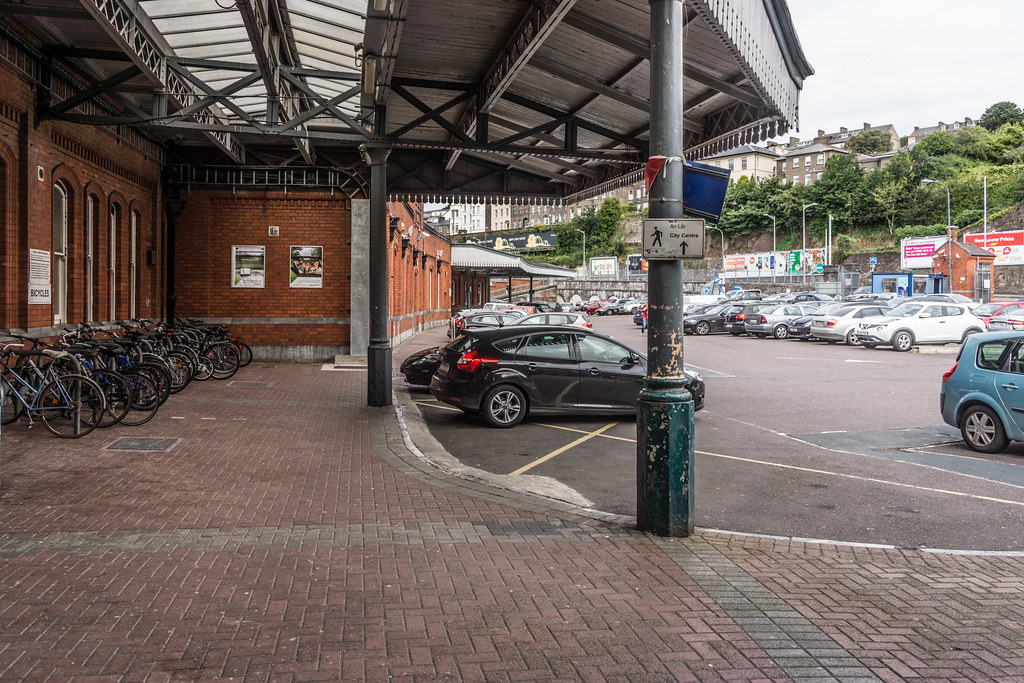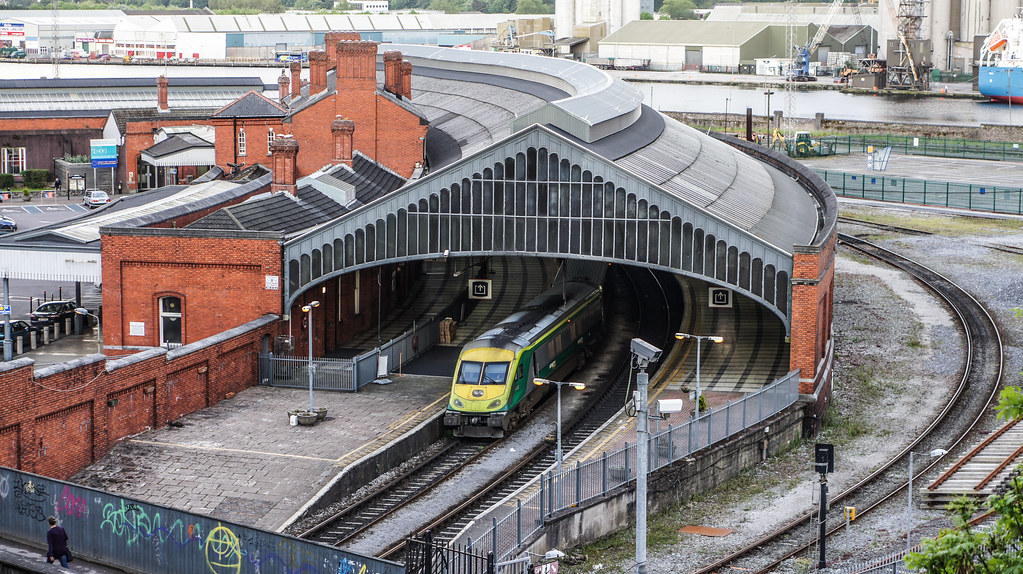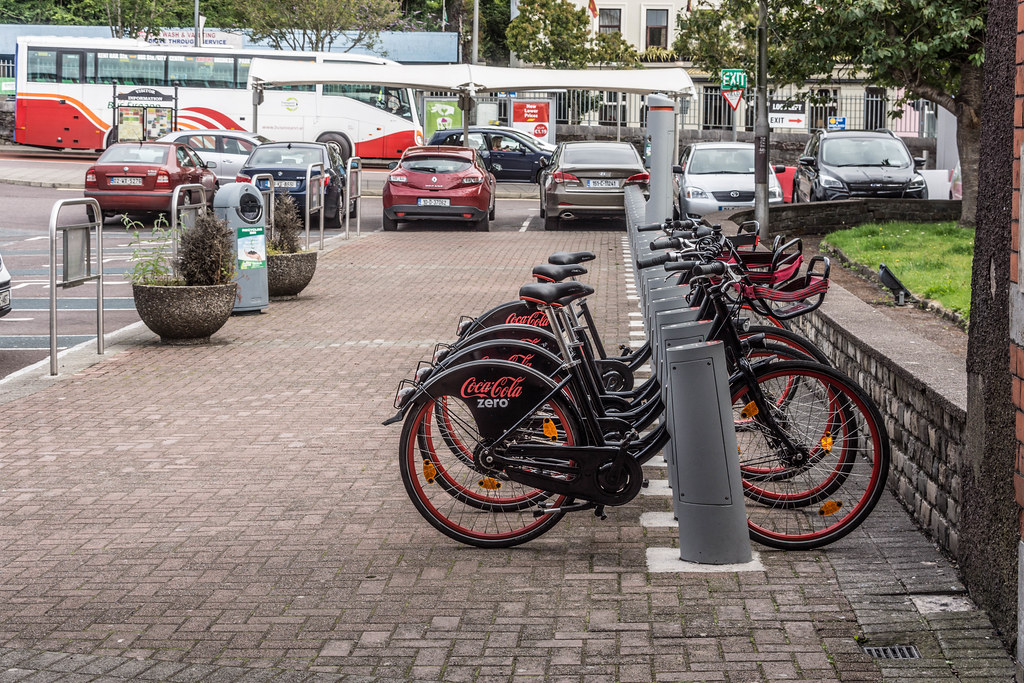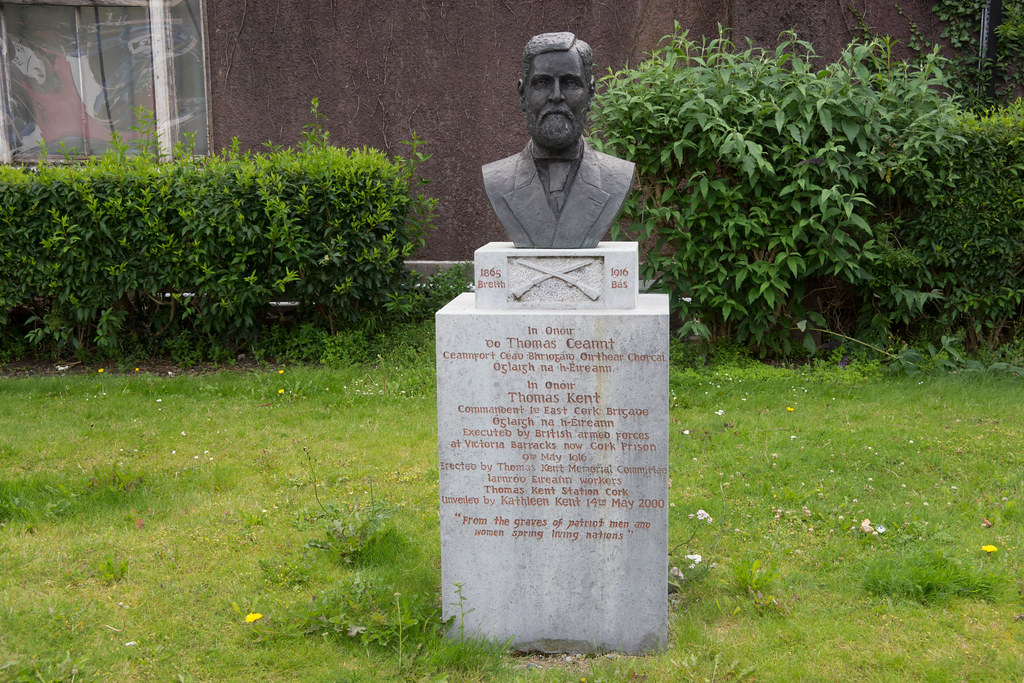KENT STATION IN CORK
SORRY FOR THE DELAY
Kent Station is an Iarnród Éireann railway station in Cork, Ireland. Originally opened in 1893, the station operates as a hub for Intercity services to Dublin and Tralee and commuter services to Mallow, Cobh and Midleton
The station was originally called Glanmire Road Station, but was renamed for Thomas Kent in 1966 on the 50th anniversary of the Easter Rising.
The station opened on 2 February 1893 and the current building was built in the same year. The station replaced two earlier stations that served as separate termini for the Great Southern and Western Railway (GS&WR) and Youghal Railway. The original GS&WR station for the Glanmire line was located directly in front of the portal of the tunnel through which the railway into Cork passed. And the original Cork & Youghal Railway terminus was above the tunnel portal.
The purpose of the new station was to allow through running of trains, following the 1865 takeover of the Cork and Youghal Railway by the Great Southern and Western Railway. The station is the only one of the 6 Cork railway stations that exists today.
On 24 February 2012, Kent Station briefly shut after it sprung a gas leak.
On 18 December 2013, part of the canopy over platforms 1 and 2 collapsed in high winds. There was damage to one train and one person suffered minor injuries. In February 2014 €2.8 million has been allocated to repair the canopy.
An old locomotive is on permanent display in the concourse at Kent Station since 1950. "Engine No. 36" dates from 1847 and is displayed in the booking hall. Originally built by Bury, Curtis, and Kennedy of Liverpool at a cost of £1,955, the engine was obtained by the Great Southern and Western Railway to run services from Dublin to Cork. The engine remained in service until 1874.
She was displayed at the Cork exhibition in 1902, the Railway Centenary Exhibition in 1925 and the bi-centenary of the Royal Dublin Society at Ballsbridge in 1930. She was moved to a new position and restored by Iarnród Éireann in 2007.
The station offers direct intercity rail services to Heuston Station and stations in Kerry such as Killarney, Farranfore (for Kerry Airport) and Tralee. Cork Suburban Rail services follow the Cobh and Mallow lines. A new commuter line also operates to Midleton.
The station has three terminating platforms 1-3 (in the Cobh direction) and two through platforms 4 and 5. Formerly there was an additional terminating platform adjacent to platform 3 numbered 4. Until the mid-1990s the through platforms were number 5 and 6. The former platform 4 was removed in 1984. Since December 2005's timetable change, the through platforms tend to get quite congested as commuter trains often come in together, clogging up limited space. Since the reopening of the Cork & Youghal Railway as far as Midleton increased use has been made of the terminating platforms 1 to 3. There is also a loop line behind platform 5, which used to be used to facilitate moving locomotives from the end of arriving trains to the other end in preparation for departure. This line used to be a double tracked freight avoiding line that enabled goods trains to bypass the passenger station. It is no longer necessary since all services to the station are operated either by railcars or by Mark 4 sets with a driving van trailer.
The only platform not directly accessible from the station concourse, platform 5, is accessed through a subway, unlike most other Irish stations, which use footbridges.
In 2014 €3 million has been allocated towards implementing phase one works on a new entrance onto Horgan's Quay/Lower Glanmire Road to improve bus, cycle and taxi connections with the city centre.
Planning was granted for the full scheme by Cork City Council in July 2013. Permission includes new entrance building, new bi-directional road linking Railway Street/Alfred Street and Horgans Quay including bus shelters and new Carpark with 140 spaces and set-down area accessed from Horgans Quay.
Work began in summer 2014 and will take approximately 2 years to complete.
The station opened on 2 February 1893 and the current building was built in the same year. The station replaced two earlier stations that served as separate termini for the Great Southern and Western Railway (GS&WR) and Youghal Railway. The original GS&WR station for the Glanmire line was located directly in front of the portal of the tunnel through which the railway into Cork passed. And the original Cork & Youghal Railway terminus was above the tunnel portal.
The purpose of the new station was to allow through running of trains, following the 1865 takeover of the Cork and Youghal Railway by the Great Southern and Western Railway. The station is the only one of the 6 Cork railway stations that exists today.
On 24 February 2012, Kent Station briefly shut after it sprung a gas leak.
On 18 December 2013, part of the canopy over platforms 1 and 2 collapsed in high winds. There was damage to one train and one person suffered minor injuries. In February 2014 €2.8 million has been allocated to repair the canopy.
An old locomotive is on permanent display in the concourse at Kent Station since 1950. "Engine No. 36" dates from 1847 and is displayed in the booking hall. Originally built by Bury, Curtis, and Kennedy of Liverpool at a cost of £1,955, the engine was obtained by the Great Southern and Western Railway to run services from Dublin to Cork. The engine remained in service until 1874.
She was displayed at the Cork exhibition in 1902, the Railway Centenary Exhibition in 1925 and the bi-centenary of the Royal Dublin Society at Ballsbridge in 1930. She was moved to a new position and restored by Iarnród Éireann in 2007.
The station offers direct intercity rail services to Heuston Station and stations in Kerry such as Killarney, Farranfore (for Kerry Airport) and Tralee. Cork Suburban Rail services follow the Cobh and Mallow lines. A new commuter line also operates to Midleton.
The station has three terminating platforms 1-3 (in the Cobh direction) and two through platforms 4 and 5. Formerly there was an additional terminating platform adjacent to platform 3 numbered 4. Until the mid-1990s the through platforms were number 5 and 6. The former platform 4 was removed in 1984. Since December 2005's timetable change, the through platforms tend to get quite congested as commuter trains often come in together, clogging up limited space. Since the reopening of the Cork & Youghal Railway as far as Midleton increased use has been made of the terminating platforms 1 to 3. There is also a loop line behind platform 5, which used to be used to facilitate moving locomotives from the end of arriving trains to the other end in preparation for departure. This line used to be a double tracked freight avoiding line that enabled goods trains to bypass the passenger station. It is no longer necessary since all services to the station are operated either by railcars or by Mark 4 sets with a driving van trailer.
The only platform not directly accessible from the station concourse, platform 5, is accessed through a subway, unlike most other Irish stations, which use footbridges.
In 2014 €3 million has been allocated towards implementing phase one works on a new entrance onto Horgan's Quay/Lower Glanmire Road to improve bus, cycle and taxi connections with the city centre.
Planning was granted for the full scheme by Cork City Council in July 2013. Permission includes new entrance building, new bi-directional road linking Railway Street/Alfred Street and Horgans Quay including bus shelters and new Carpark with 140 spaces and set-down area accessed from Horgans Quay.
Work began in summer 2014 and will take approximately 2 years to complete.
